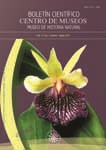Authors
Abstract
Moniliophthora perniciosa presents discrepancies in its taxonomy and is the causal agent of cocoa witches' broom, which in Colombia is the second disease after moniliasis (Moniliophthora roreri). In this study 12 samples of the pathogen obtained from different cocoa materials from the Casa Luker S.A. Farm (Palestina, Caldas, Colombia) were analyzed. The DNA was obtained from monosporic cultures and from the fungus fructification. Each sample was evaluated from microbiological cultures using molecular markers ITS (ITS1, ITS2 and 5.8S genes). The Molecular ADN characterization obtained from direct extraction from the fungus fructification avoids artificial selection in the culture means and ensures a more realistic diagnosis of the pathogen diversity in the plantations. The molecular characterization allowed differentiation between M. pernicious and M. roreri.
References
ARANZAZU, F., 2000. Escoba de bruja en Colombia su impacto económico y manejo, Tecnología para el mejoramiento del sistema de producción del cacao. Revta. Corpoica, 85-90.
ARRUDA, C.; FERREIRA, M. & FELIPE, M., 2003. Nuclear and Mitochondrial rDNA variability in Crinipellis perniciosa from different geographic places. Origins and hosts, 25-37.
CHEN, W.; GRAU, R.; ADEE, E. & MENG, X., 2000. A molecular marker identifying subspecific populations of the soybean brown stem rot pathogen, Phialophora gregata. Ecology and Population Biology, 90: 875-883.
CORREA, A., 1983. Prueba de medios de cultivos artificiales para la fructificación de Crinipellis perniciosa: Tesis, Universidad de Caldas, Facultad de Ciencias Agropecuarias, Manizales.
GARCÉS, D., 2001. Escoba de bruja del cacao. Revta. Agronomía, 24: 329-369.
GOODWIN, D.C. & LEE, S.B., 1993. Microwave Miniprep of Total Genomic DNA from Fungi, Plants, Protists, and Animals for PCR. Biotechniques, 15: 438-444.
LANA, T., 2004. Caracterização genética e fisiológica de Crinipellis perniciosa. 91f. Tese (Doutorado em Fitopatologia) - Escola Superior de Agricultura 'Luiz de Queiroz', Universidade de São Paulo, Piracicaba,
MILLER, R.; SOARES, A. & LOPES, C.A., 1999. Molecular comparison of Fusarium populations causing eumartii wilt and dry rot of potato in Brazil. Fitopatologia Brasileira, 24: 149-155.
MINISTERIO DE AGRICULTURA., 2004. Manual del cultivo del Cacao: 132-139. Programa para el Desarrollo de la Amazonia, Proamazonia.
NIH (NATIONAL INSTITUTE OF HEALTH, USA), 2005. DNA preparation from blood. Maryland, US. Disponible en: http://www.riedlab.nci.nih.gov/index.php/selected-publications (última consulta en línea 12 de enero de 2009).
PHILLIPS-MORA, W. & WILKINSON, M.J., 2000. Biodiversity and Biogeography of the cacao (Theobroma cacao L.) pathogen Moniliophthora roreri (Cif.) Evans. Plant Pathology, 56: 911-922.
PHILLIPS-MORA, W; AIME, M. & WILKINSON, M., 2007. Biodiversity and biogeography of the cacao (Theobroma cacao) pathogen Moniliophthora roreri in tropical America. Plant Pathology 56: 911-922.
RESENDE, M.; GUTEMBERG, B.; SILVA, L.; NIELLA, G.; CARVALHO, G.; SANTIAGO, D. & BEZERRA, J., 2000. Crinipellis perniciosa proveniente de um novo hospedeiro, Heteropteys acutifolia, e'patogenicoao T. cacao. Fitopatologia Brasileira, 25: 88-91.
RODRÍGUEZ, E. & SAAVEDRA, J., 2005. Ajuste de metodologías para la producción de basidiocarpos de escoba de bruja Crinipellis perniciosa (Stahel) Singer en medios artificiales. Ascolfi Informa, 31: 1-3.
SANGUINETTI, C.J; DIAS, N. & SIMPSON, A.J., 1994. Rapid silver staning and recovery of PCR products separate on polycrylamide gels. Biotechniques, 17: 914-921.
SARTORATO, A.; NECHET, K.L. & HALFELD-VIEIRA, B.A., 2006. Diversidad e genética de isolados de Rhizoctonia solani coletados em feijão-caupi no Estado de Roraima. Fitopatología Brasileira, 31: 24-33.
SINGER, R., 1942. Monographic study of the genera Crinipellis and Chaetocalathus. Lilloa Tucuman, 8: 441-514.
STAHEL, G., 1915. Bull. Dep. Landb. Suriname 33, 26pp. (description sp. nov)
VILGALYS, R. & GONZÁLEZ, D., 1990. Organization of ribosomal DNA in the basidiomycete Thanatephorus praticola. Current Genetics, 18: 277-280.
VILLEGAS, R.L., 2005. Aislamiento monospórico de Moniliophthora perniciosa. Instituto Colombiano Agropecuario.
WHITE, T.; BRUNS, T.; LEE, S. & TAYLOR, J., 1990. Amplification and direct sequencing of fungal RNA genes for phylogenetics: 315-322 (in) M.A. INNIS, D.H. GELGARD, J.J. SNINSKY & T.J. WHITE (eds.) PCR Protocols: a Guide to Methods and Applications. San Diego, CA: Academic Press.

 PDF (Español)
PDF (Español)
 FLIP
FLIP


















